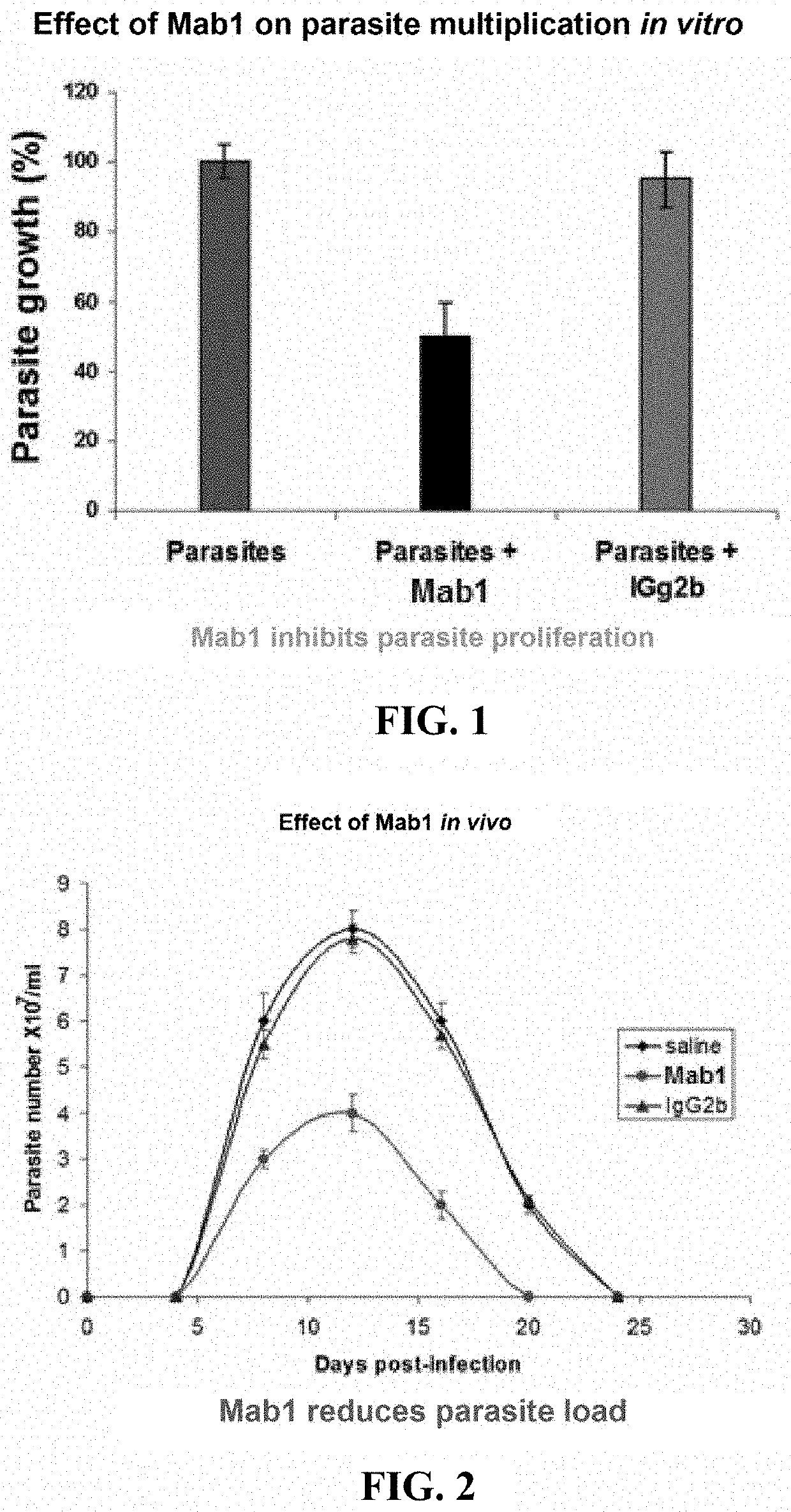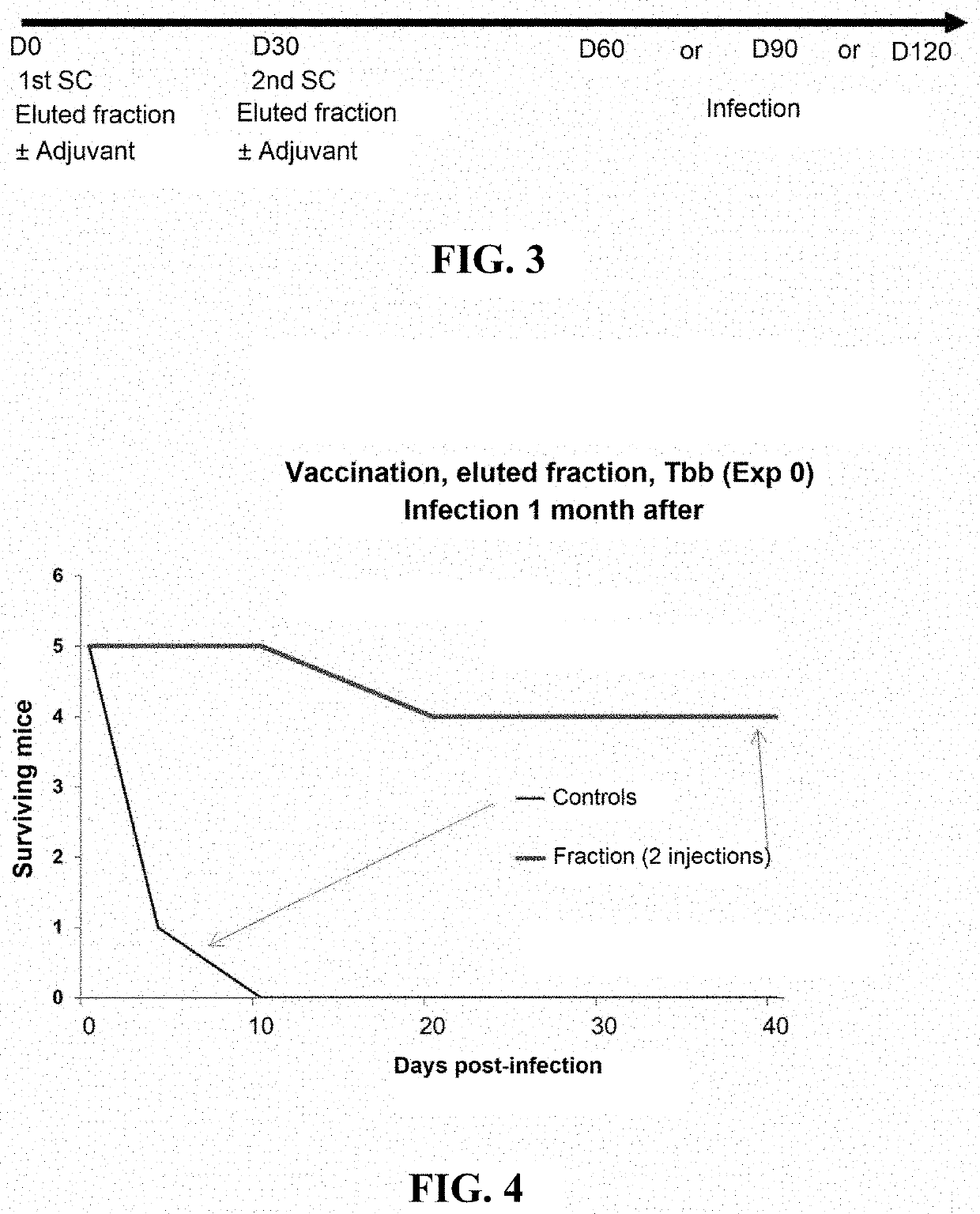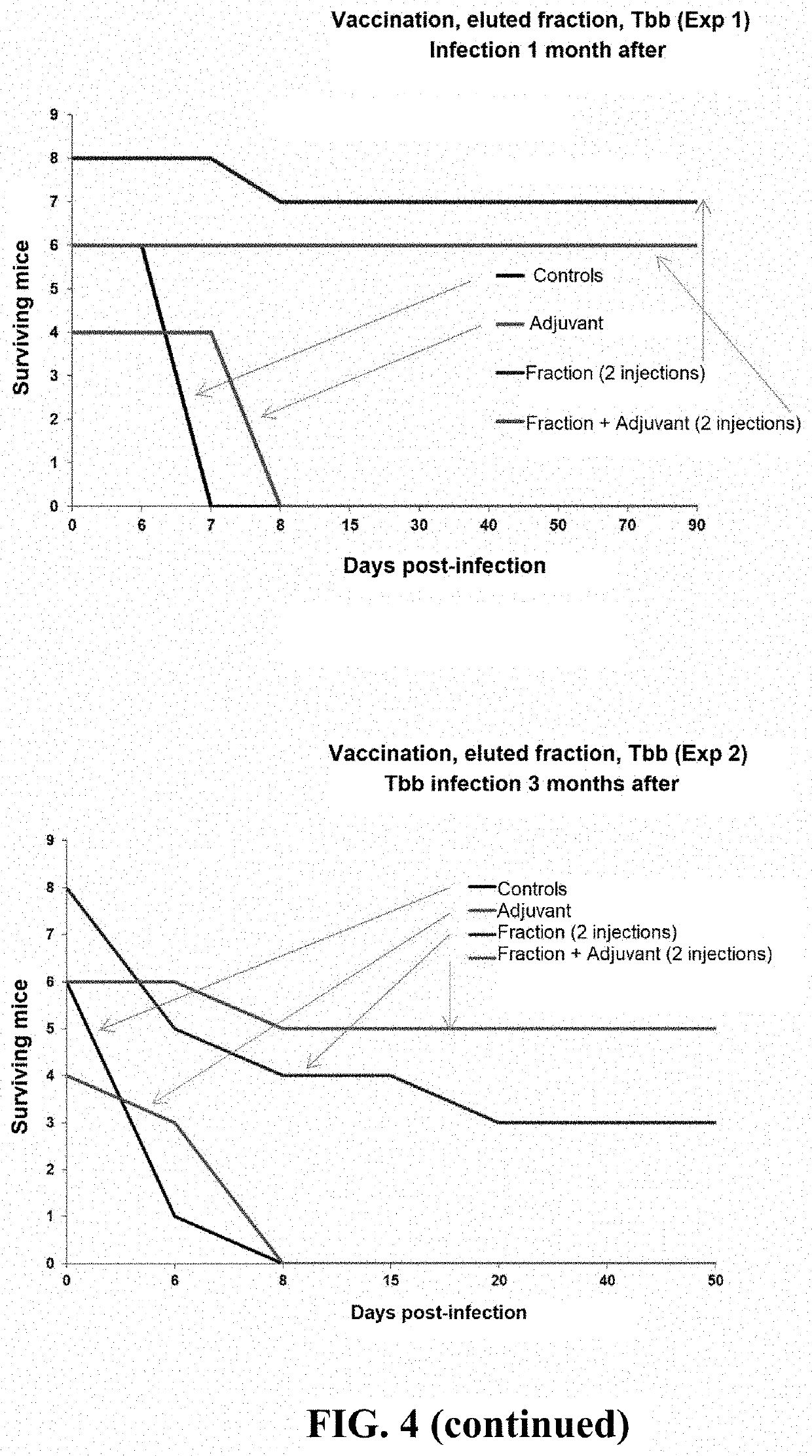Treatment and detection of trypanosomes
a trypanosome and tryptosome technology, applied in the field of treatment and detection of trypanosomes, can solve the problems of animal death, significant economic repercussions, and development of effective vaccine strategies, and achieve the effects of effective protection against infection, and effective methods and compositions
- Summary
- Abstract
- Description
- Claims
- Application Information
AI Technical Summary
Benefits of technology
Problems solved by technology
Method used
Image
Examples
example 1
n of Parasite Growth by a Monoclonal Antibody Against Kinesin
[0133]In vitro, monoclonal antibody Mab1 was added to parasites in co-culture with feeder layers (Mab1 concentration in the culture: 4 μg / mL). Compared with the control, Mab1 inhibits parasite growth whereas the IgG2b isotype control (concentration: 4 μg / mL) has no effect (FIG. 1).
[0134]In vivo, injecting Mab1 (200 μg in 200 μL of PBS intraperitoneally) into mice parasitized for 2 days inhibits the development of parasitemia (expressed in log 10 of parasite number per mL of blood); the IgG2b isotype control (200 μg in 200 μL of PBS intraperitoneally) has no effect (FIG. 2).
example 2
rotection Against Parasites by Vaccination
[0135]The fraction enriched in TbKHC1 protein is injected (10-20 μg / mouse) twice, with a 30-day interval (D0 and D30), into the mouse via the subcutaneous route, with or without adjuvant (saponin, 25 μg per mouse). Control mice receive medium alone with or without adjuvant.
[0136]The mice are infected 1, 2 or 3 months after the last injection (see FIG. 3). The parasitemia of the vaccinated mice and of the controls (medium alone±adjuvant) is evaluated daily for 25 days post-infection, then once per week thereafter. The results are presented in FIG. 4.
[0137]Control mice having received the medium with or without adjuvant die around the 7th-8th day post-infection. Remarkably, 22 of 26 mice (84.6%) having received two injections of TbKHC1 protein+adjuvant survive. Adding the adjuvant to TbKHC1 protein increases the survival rate of vaccinated mice and the duration of efficacy of the vaccine.
example 3
on with TbKHC1 Induces Cross-Protection
[0138]Mice are immunized with TbKHC1 protein and then infected 2 months after either with the same trypanosome or with a trypanosome of another species.
Infection 2Number ofmonths afterOrigin ofsubcutaneousthe lastTbKHC1 forinjections +injection +ParasitemiaBatchesimmunizationsaponinadjuvantand survivalBatch 1T. brucei2T. b.No parasite(14 mice)gambiensegambiensedetectedin themice; allsurvive at50 daysBatch 2T. brucei2T. b. bruceiNo parasite(14 mice)gambiensedetectedin themice; allsurvive at50 days
These results show cross-protection, wherein TbKHC1 protein of T. brucei gambiense is capable of inducing protection against infection with T. brucei brucei.
PUM
| Property | Measurement | Unit |
|---|---|---|
| molecular weights | aaaaa | aaaaa |
| molecular weights | aaaaa | aaaaa |
| molecular weight | aaaaa | aaaaa |
Abstract
Description
Claims
Application Information
 Login to View More
Login to View More - R&D
- Intellectual Property
- Life Sciences
- Materials
- Tech Scout
- Unparalleled Data Quality
- Higher Quality Content
- 60% Fewer Hallucinations
Browse by: Latest US Patents, China's latest patents, Technical Efficacy Thesaurus, Application Domain, Technology Topic, Popular Technical Reports.
© 2025 PatSnap. All rights reserved.Legal|Privacy policy|Modern Slavery Act Transparency Statement|Sitemap|About US| Contact US: help@patsnap.com



